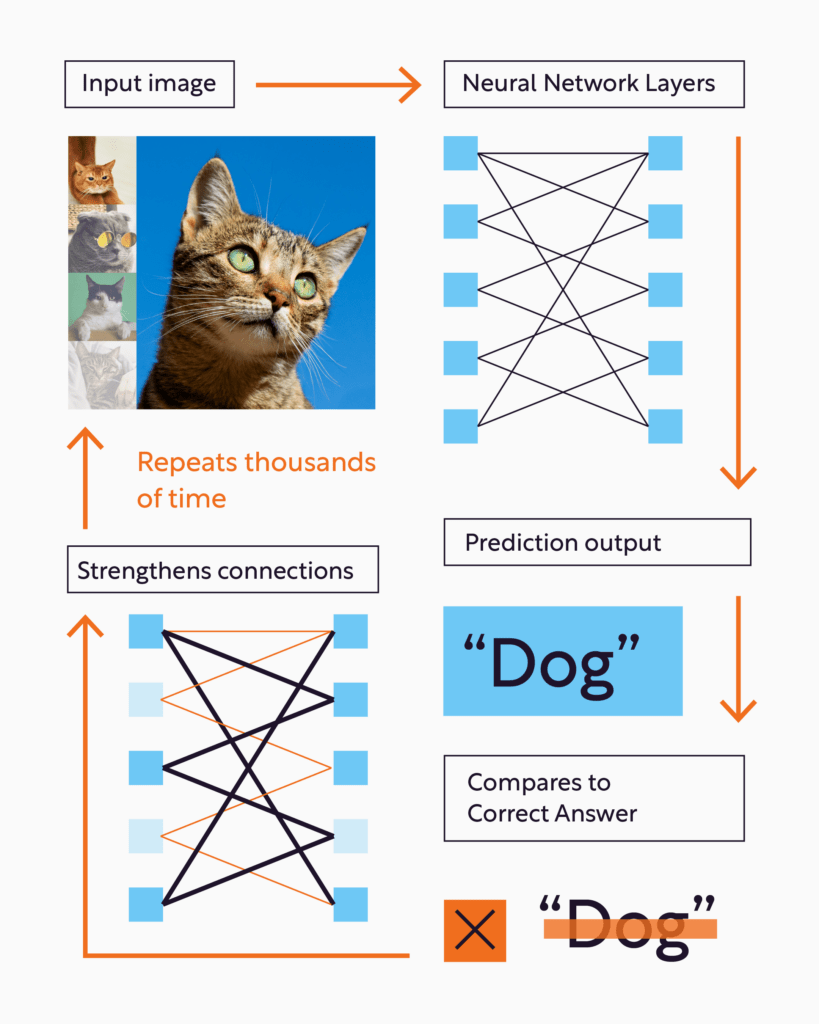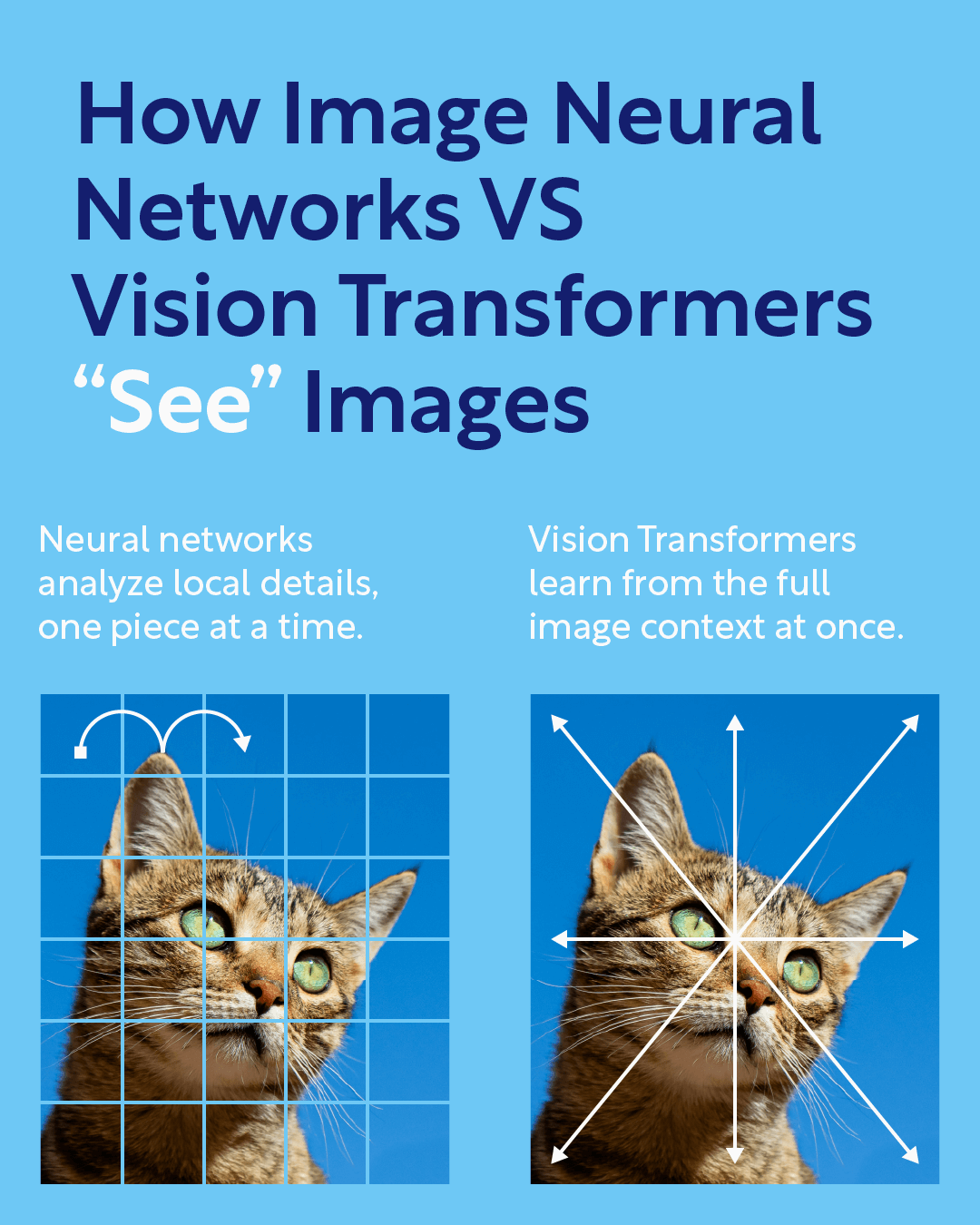Neural networks are at the heart of many of today’s most exciting AI breakthroughs, including those transforming how we work with images. From automatically tagging and organizing photos to helping businesses understand their visual content at scales that were once impossible, these powerful systems are making once-impossible tasks fast and accessible.
In this post, we’ll break down what an image neural network is, why it’s unique, and how it’s used to solve real-world problems.
What Is a Neural Network?
At its core, a neural network is a type of computer program inspired by how the human brain works. You can think of it as a layered system of interconnected nodes (sometimes called “neurons”) that process information.
Each neuron receives inputs (like pixels in a photo), performs a simple calculation, and passes the result along.
As information moves through the layers, the network learns to detect increasingly complex patterns.
During training, the neural network adjusts its internal connections to improve accuracy, gradually learning what to look for.
A Real-World Example for Further Understanding
Imagine you’re learning to tell cats from dogs. The first time, you might guess randomly. Each time someone corrects you, you notice, “floppy ears are more common on dogs,” or “Pointy ears are often cats.” You keep adjusting your mental checklist. After enough examples, you can spot them easily.
A neural network does the same thing, only instead of ears and tails, it works with mathematical patterns in pixels.

What Makes an Image Neural Network Different?
While all neural networks share the same basic idea, an image neural network is designed specifically to understand visual data.
One of the most common architectures for this purpose is called a convolutional neural network (CNN). CNNs excel at analyzing images because they:
- Preserve the spatial structure of images (so a cat’s face is recognized as a face, not random pixels).
- Focus on small regions of the image at a time to find patterns.
- Use multiple layers to build up from simple shapes to complex objects.
By layering these capabilities, an image neural network can learn to detect and label virtually any visual element, even in massive collections of photos.
Where You’ve Probably Seen Image Neural Networks in Action
Today, image neural networks are behind many applications you might use without realizing it. Here are a few examples:
- Automatic Photo Tagging – Neural networks are the best way to identify objects, people, or locations in photos.
- Visual Search – Retailers enable customers to search for products by uploading a picture, which an image neural network compares to their catalog.
- Quality Control – Manufacturers deploy imaging AI to spot defects in products automatically.
At MediaViz, our technology uses image neural networks to help companies automatically organize, curate, and analyze large volumes of visual content. For example, our AI models can sort photos by theme, add automatic keywords and labels, or suggest the best images to feature, all using the power of trained neural networks.
Why Does This Matter?
Billions of photos and videos are created every single day; it’s easy to get buried in visual clutter. Image neural networks are like your behind-the-scenes helpers, making sense of it all so you don’t have to.
Here’s why this matters:
- They save you time: No more endless scrolling or manual sorting. Neural networks can instantly organize, label, and filter massive image collections.
- They help you find what you need – Whether it’s the perfect product photo or that one picture from last year’s event, an image neural network can surface it in seconds.
- They make content smarter: From improving search (hello, personalized search results!) to suggesting the best images from a collection, neural networks turn raw visuals into useful information.
- They keep things safe: Filtering out inappropriate or low-quality content becomes much easier (and faster) with AI on your side.
At MediaViz, we make it easier to transform visual content into insights, ideas, and opportunities.
A Newer Approach: Vision Transformers
While we’re talking about image neural networks, we might as well talk about vision transformers, too!
While convolutional neural networks (CNNs) have been the standard for image recognition for years, a newer type of model called vision transformers is quickly gaining traction in the world of imaging AI.
So what’s the difference?
Neural networks analyze an image piece by piece. They look at small sections (like edges or textures) and build up to a full understanding by combining those details. This works really well for identifying fine-grained features like whether someone’s eyes are open, or whether a product has a scratch.
Vision transformers take a more holistic approach. They break an image into sections called “patches” and use something called self-attention to understand how those patches relate to one another. Instead of focusing on one small area at a time, vision transformers can “see” the entire image all at once, which helps them better understand context, relationships, and meaning.

Why This Matters
- Better at understanding relationships: Vision transformers can pick up on how different elements in an image relate to each other, like how a caption might describe what’s happening in the scene.
- Stronger performance with text: Since these models use the same architecture as modern language models (like ChatGPT and Gemini), they’re especially powerful when working with both images and text. This is important as more tools become multi-modal, capable of understanding not just images, but also language, video, and more.
- Where MediaViz is headed: At MediaViz, we’re starting to incorporate vision transformers into our architecture. This allows us to tap into deeper semantic understanding and lay the foundation for more language-aware features across our platform.
Want to Learn More?
If you’re curious about putting image neural networks to work, you don’t have to start from scratch.
At MediaViz, we’ve already built and trained advanced models that can see, understand, and organize visual data at scale.
Whether you’re developing a new product, streamlining workflows, or looking to deliver better experiences for your customers, our API gives you the building blocks to make it happen without the complexity of creating your own neural network from the ground up.
Contact us today to learn more!

